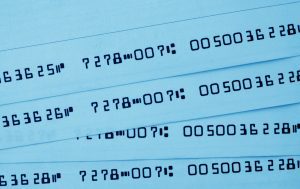Introduction
We just held LSL’s Annual GASB update, and we spoke to several government representatives who are still trying to decide if a software solution for GASB 87 lease reporting makes sense for their agency.
We say DO IT! And, SOON!
Here’s the number one reason: the deadline is fast approaching, and unless your staff has already started the calculations manually—which are time-consuming and prone to errors—you may miss the deadline of June 30 (in most cases). If you wait and change your mind, implementation for the software is anywhere between eight and sixteen weeks.
Here’s another reason: opinions about cities are very important these days, and inaccurate financial reporting can get you on the naughty list. See our blog post about city audits!
GASB 87 Leases: Overview
We realize that most government agencies are familiar with the issuance of GASB Statement No. 87 for Leases. But just in case, we have provided two links that will clarify and remind agencies about the Statement No. 87 release in June 2017. One is the GFOA Overview, and the other is the Government Industry Alert issued by the CalCPA GAA Committee and CCMA.
Here’s one critical thing to remember for starters:
“In June 2017, the GASB issued Statement No. 87, Leases. GASB 87 is effective for fiscal years beginning January 1, 2020. It is important to know that the standard is to be applied retroactively; existing leases are to be recognized and measured based on the facts and circumstances of the lease in the period of implementation of GASB 87, not the inception of the lease.”
There’s much more that can be learned here: Government Industry Alert. This resource uses language that might help clear up any particularly complicated areas. Many agencies have only a few leases and perhaps for those, manual calculations might be a reasonable solution. However, for most cities and counties, the lease count exceeds 10 and includes cell tower leases, building leases, vehicle and equipment leases, and much more. Properly accounting for leases in excess of 10, given the short amount of personnel resources agencies have, means manual calculations for complex GASB implementations can challenge the best of agencies. Today, lease accounting is best handled with software solutions that offer several benefits…and it’s affordable!
Benefits of Using a Software Solution
Government agencies are hesitant to spend money on a computer to do what the agency accountants have done with Excel spreadsheets all these years. We hear it a lot. However, the benefits of using software solutions for GASB 87 lease reporting greatly outweigh the costs. Three immediate benefits are that the GASB 87 lease accounting software solutions are:
- Affordable: As of this writing, the software runs under $10,000 per year for up to 75 leases.
- Reliable: Fully compliant software solutions are vetted by 3rd party CPA firms.
- Accurate: Extraction of lease data is done by trained professionals, and JEs and reporting are built-in, so calculations are not subject to human error as in an Excel spreadsheet.
Perhaps the most significant benefit is that software-prepared lease reports have higher auditor acceptance of lease data than the “human” versions.
Three software companies we recommend
LSL CPAs can safely recommend the following three lease accounting software companies. They all have their pros and cons, just like any software solution. However, we can explain the main differences in a few minutes and some of the other variations in a longer conversation. The three are:
Conclusion & Recommendations
Because city budgets are tight these days, city government offices of all sizes are short-staffed. Having fewer people increases stress, reducing the reliability of GASB reporting produced by these hardworking employees. Lease accounting is not glamorous…it’s tedious. The details can escape the most meticulous accountants, and yet auditors tend to be less (not more) lenient with hand-done leases.
Implementing a software solution for GASB 87 lease reporting is affordable and reliable. LSL CPAs can facilitate introductions and assist your team with aspects of the implementation if needed. We would recommend deciding to use a software solution sooner rather than later. A typical implementation if you pull the trigger today is eight to ten weeks. As the deadline nears and then passes, a complete implementation can stretch to twelve to sixteen weeks. Our recommendation: Don’t wait. And if you’re still unsure, please don’t hesitate to contact our offices with questions.




